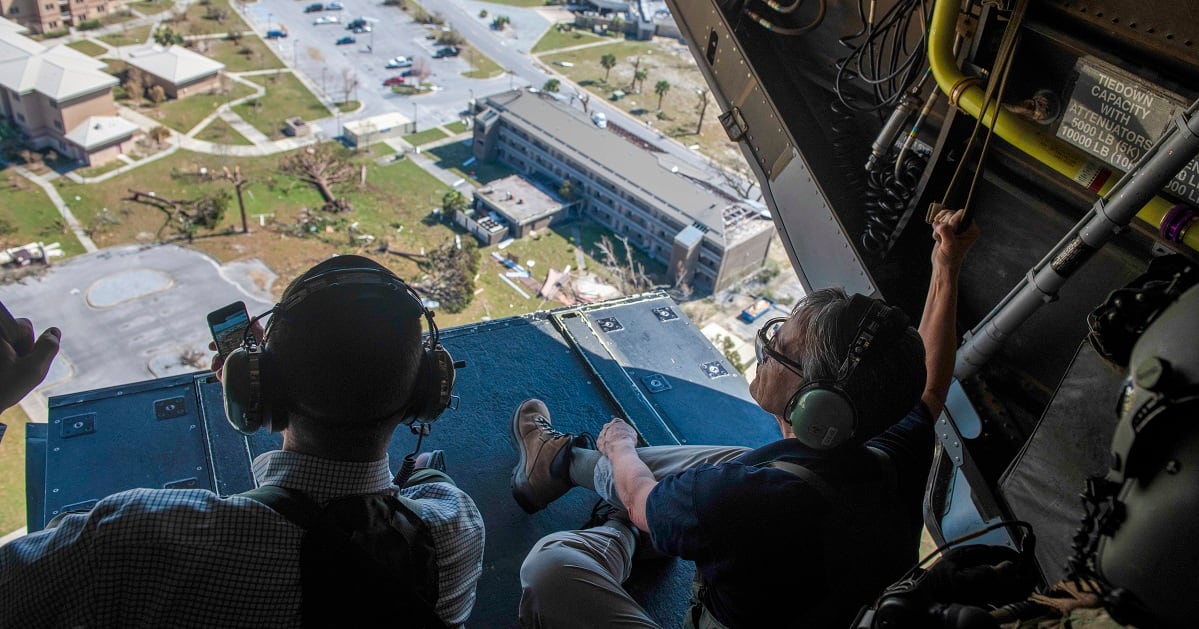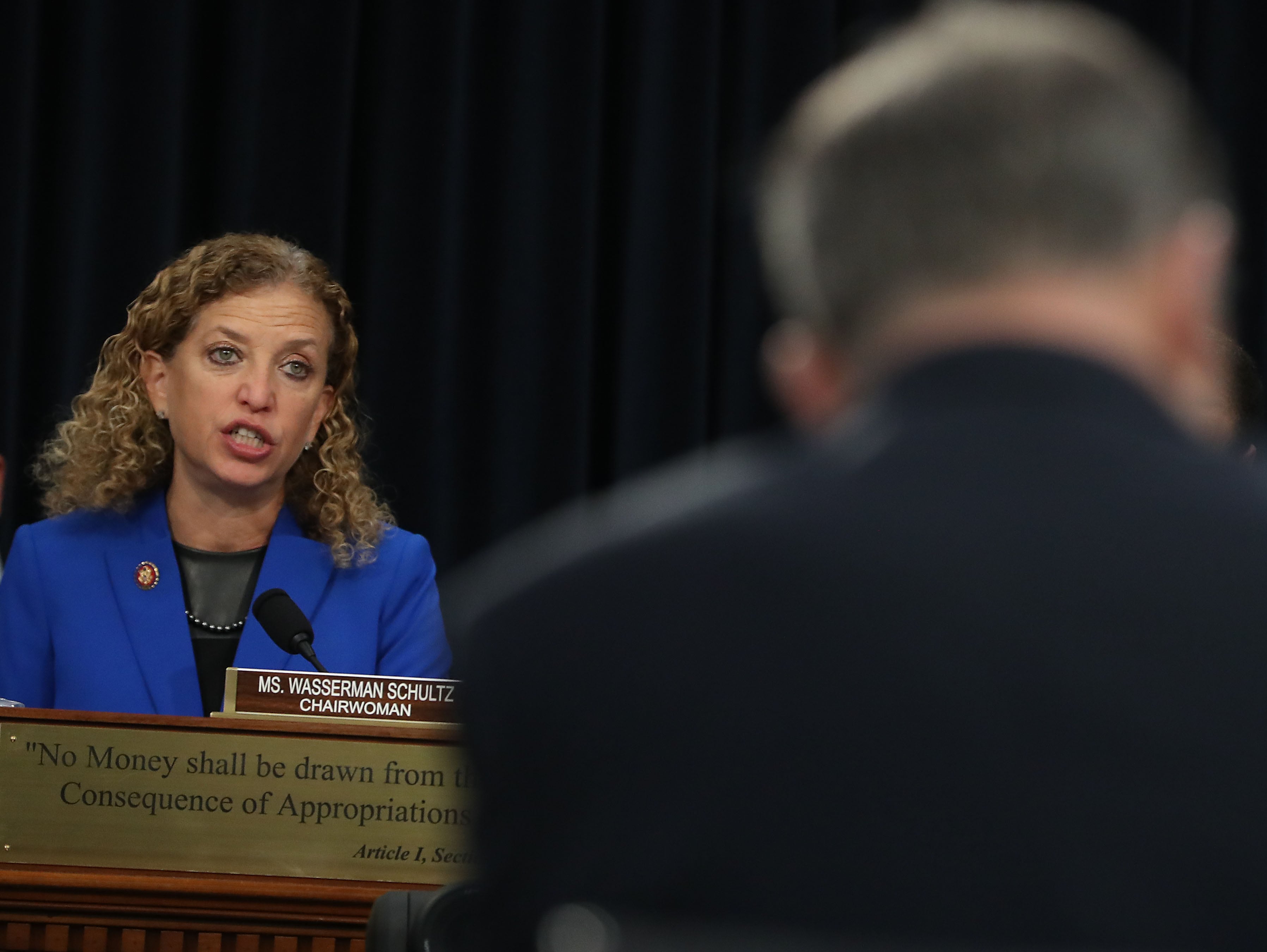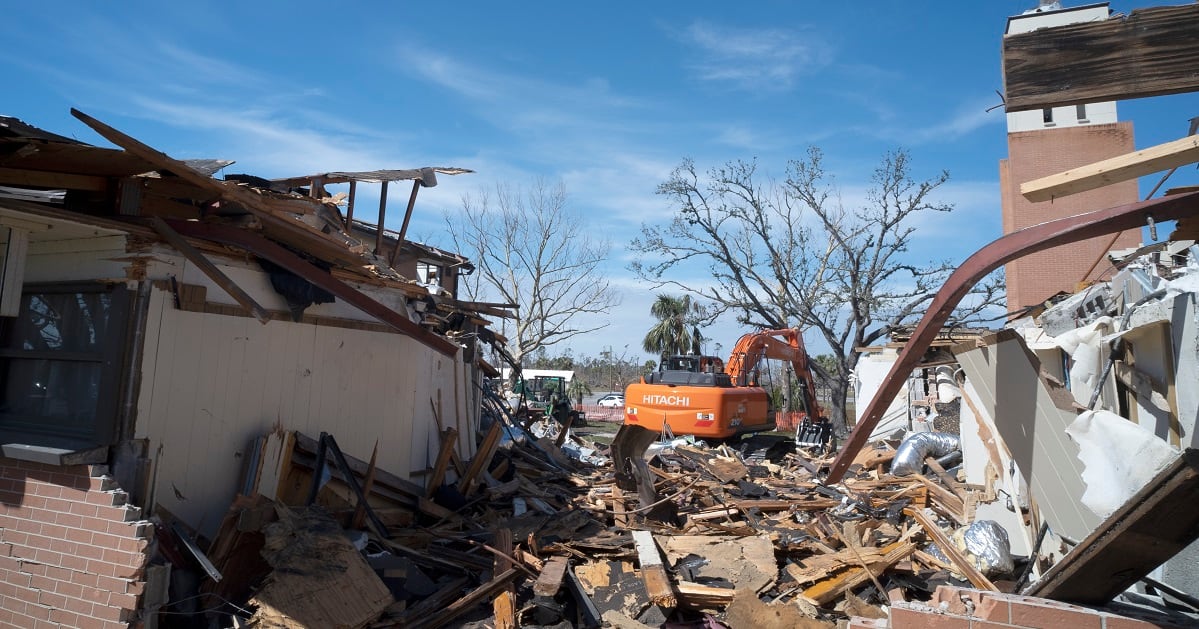It’s highly unlikely that the president’s plan to repurpose military construction dollars for his southern border wall will impact the more than $3 billion the Air Force will spend to rebuild Tyndall Air Force Base over the next five years, which was heavily damaged by Hurricane Michael on Oct. 10.
But the shifting of funds to rebuild Tyndall AFB has lawmakers concerned that Air Force readiness and other projects may be impacted down the line.
“There’s no funds there that would be eligible to be removed from our plan at Tyndall,” John Henderson, the Air Force’s assistant secretary for installations, environment and energy, told U.S. House representatives Wednesday.
The funds now being used to rebuild Tyndall are flowing out of Air Force’s fiscal 2019 operations and maintenance funds, Henderson said, adding that “we’re already pulling those from other accounts because that is a priority for us.”
“Secondly, because of the urgency and because of the mission that we’re trying to recover there, it would be highly unlikely that we would divert funds from Tyndall at this point in support of 2808 [national emergency declaration] authorities,” Henderson said.
Roughly 95 percent of Tyndall AFB was destroyed in the hurricane this fall, lawmakers said Wednesday.
The Air Force has committed not just to rebuilding the air base, but developing it as an “installation of the future," which would include smart facilities able to withstand the Florida Panhandle’s severe weather and an expanded flight line to support F-35 operations by 2023.
“To date, we’ve spent about $350 million in operations and maintenance funds at Tyndall,” Henderson said. “Those funds primarily are coming out of facilities accounts in the Air Force. ... In other words, funding that would have been primarily scheduled to be spent at the end of the year, we’ve pulled those forward in the beginning of the year.”
Henderson also said that there will be a request coming in the 2020 budget for the substantial rebuilding of Tyndall.
RELATED

The 2019 operations and maintenance funds that the Air Force is tapping into are being shifted away from other spending needs, Florida Congresswoman Debbie Wasserman Schultz noted during the hearing.
While the Air Force plans to ask for more Tyndall rebuilding funds in its FY20 budget, an emergency supplemental to address the 2019 funds currently being taken from end of the year projects has not been submitted, she said.
“Tyndall is counting, that region is counting, on an emergency supplemental,” Schultz said, noting the economic significance of the air base to the surrounding Panhandle.
“And it’s not like there aren’t other needs that the Air Force has," she added. "So, if all of this ends up getting top loaded in FY20 then you are going to either impact how quickly we rebuild Tyndall or dramatically impact the rest of your [military construction] priorities.”

“Doesn’t that mean that this national emergency declaration by the president is going to affect military readiness?” Schultz asked.
Henderson said he did not know whether the president’s declaration would end up impacting Air Force readiness.
“This is an authority that hasn’t been invoked yet,” he said. “We haven’t gone through the readiness impacts.”
“The Air Force cannot afford to recover Tyndall inside of our currently planned and programmed appropriations,” Henderson said. “And I think I have to leave the committee with that. And we’re doing everything we can to keep that recovery on track and to maintain the readiness and lethality and our readiness objectives for the Air Force in FY19.”
Kyle Rempfer was an editor and reporter who has covered combat operations, criminal cases, foreign military assistance and training accidents. Before entering journalism, Kyle served in U.S. Air Force Special Tactics and deployed in 2014 to Paktika Province, Afghanistan, and Baghdad, Iraq.





